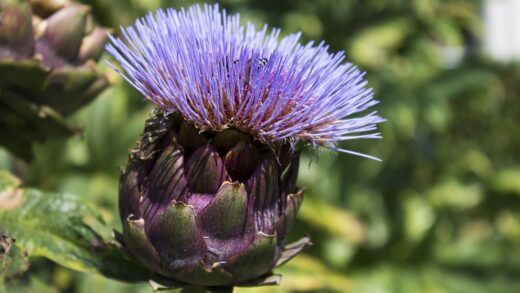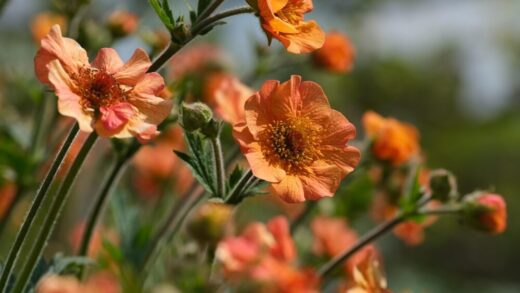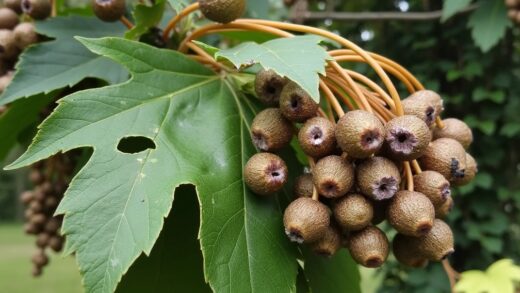Bidens ferulifolia, often celebrated as the gold of the balcony, is a remarkably resilient and visually stunning plant that brings a cascade of vibrant, sunny-yellow flowers to any space it inhabits. Its trailing habit makes it an exceptional choice for hanging baskets, window boxes, and as a ‘spiller’ element in mixed container arrangements, where its delicate, fern-like foliage and cheerful blooms can be fully appreciated. Originating from areas in Mexico and the southern United States, this plant is well-adapted to thrive in warm conditions, offering a continuous display of color from late spring until the first frosts of autumn. Understanding its fundamental needs is the first step towards cultivating a plant that not only survives but truly flourishes, becoming a centerpiece of your garden or balcony display throughout the growing season.
The key to unlocking the full potential of Bidens lies in providing it with an environment that mimics its native habitat, which primarily involves ample sunlight and well-drained soil. This plant is a true sun worshipper, requiring at least six to eight hours of direct sunlight each day to produce the most prolific and vibrant blooms. When deprived of adequate light, the plant may become leggy, with sparse flowering and less vigorous growth, losing its compact and bushy appearance. Therefore, selecting a location that receives consistent, unfiltered sunlight is paramount for its overall health and aesthetic appeal.
Beyond its light requirements, the quality of the growing medium plays a crucial role in the success of cultivating this plant. It prefers a light, airy, and well-draining potting mix, as it is particularly susceptible to root rot if its roots are left in waterlogged conditions. A high-quality, peat-based commercial potting soil, amended with perlite or sand to enhance drainage, provides an ideal foundation. This composition ensures that while the soil retains sufficient moisture to support the plant, any excess water can easily escape, preventing the development of fungal diseases that thrive in overly wet environments.
Maintaining the visual appeal of the gold of the balcony involves some minimal but important upkeep throughout the season. Although many modern cultivars are self-cleaning, meaning they drop their spent flowers without assistance, occasional deadheading can encourage even more prolific blooming and maintain a tidier appearance. Furthermore, pinching back the tips of the stems, especially early in the season, can promote a denser, more branched growth habit, resulting in a fuller and more spectacular floral display that covers the entire plant.
Understanding the growth cycle
The annual growth cycle of Bidens ferulifolia is characterized by rapid development and a long flowering period, making it a favorite among gardeners seeking season-long color. It typically begins its active growth in the spring as temperatures rise, quickly establishing a robust root system and producing lush, green foliage. This initial vegetative phase is crucial for building the energy reserves needed for the subsequent flowering stage. As the days lengthen and the intensity of sunlight increases, the plant transitions into its reproductive phase, initiating the development of its signature golden-yellow, daisy-like flowers.
More articles on this topic
This flowering period is remarkably extended, often starting in late spring and continuing unabated until the first hard frost in the autumn. The plant produces flowers in abundance, creating a continuous wave of color that is highly attractive to pollinators such as bees and butterflies, adding an extra layer of life and activity to the garden. The intensity of this blooming is directly correlated with the care it receives, particularly in terms of sunlight, water, and nutrients. Consistent conditions will ensure the plant remains a vibrant focal point throughout the entire summer and into the early autumn months.
As autumn approaches and temperatures begin to cool, the plant’s growth rate will naturally start to slow down. While it is quite tolerant of cooler evening temperatures, it is not frost-hardy, and its life cycle in temperate climates is typically concluded by the first significant frost. The foliage will begin to yellow and die back, signaling the end of the growing season. In regions with mild winters, it may behave as a short-lived perennial, but for most gardeners, it is best treated as a tender annual that completes its entire life journey within a single year.
Understanding this cycle is fundamental to its proper care, as the plant’s needs change throughout the seasons. For instance, its water and nutrient requirements are highest during the peak of its growing and flowering phase in the summer. In contrast, these needs diminish significantly as it approaches the end of its cycle in the autumn. Tailoring your care regimen to align with these natural phases will result in a healthier, more vigorous plant that rewards you with an unparalleled display of golden blooms.
Environmental preferences
Creating the ideal environment for the gold of the balcony is essential for it to thrive and produce its spectacular floral display. This plant’s origins in warmer climates dictate its primary preference for high light conditions and warmth. A south-facing or west-facing balcony, patio, or garden bed where the plant can bask in at least six hours of direct sunlight is the perfect setting. Inadequate light will lead to etiolation, where the stems become long and spindly as they stretch in search of light, and a significant reduction in the number of flowers produced.
More articles on this topic
Temperature also plays a significant role in the health and vitality of this plant. It performs best in daytime temperatures ranging from 21 to 27 degrees Celsius. While it can tolerate higher temperatures, especially if well-watered, its growth may slow during extreme heat waves. Conversely, it is sensitive to cold and will not tolerate frost. Any exposure to freezing temperatures will cause irreversible damage to the plant tissues, leading to its demise, which is why it is cultivated as an annual in most Hungarian climates.
Good air circulation is another important environmental factor that is often overlooked. Providing adequate space between plants allows air to move freely, which helps to dry the foliage quickly after watering or rain. This simple practice is highly effective in reducing the risk of fungal diseases, such as powdery mildew, which tend to develop in damp, stagnant conditions. When planting in containers or hanging baskets, avoid overcrowding to ensure each plant has sufficient access to air and light.
Finally, while Bidens is adaptable to various humidity levels, it generally prefers moderate conditions. In very dry, arid environments, the foliage may lose moisture more rapidly, necessitating more frequent watering. In excessively humid climates, the importance of good air circulation becomes even more critical to prevent fungal issues. By understanding and providing for these specific environmental preferences, you can create a microclimate where your gold of the balcony will not just survive, but truly put on a magnificent, season-long performance.
Soil and container selection
The foundation of a healthy Bidens plant begins with the right soil and container, as these elements directly impact root health and overall plant vigor. The primary requirement for the growing medium is excellent drainage. This cannot be overstated, as the plant’s fine root system is highly susceptible to rot in dense, waterlogged soil. A premium-quality, all-purpose potting mix designed for containers is an excellent starting point. To further improve its drainage capacity, consider amending the mix with inorganic materials like perlite or coarse sand at a ratio of approximately three parts potting mix to one part amendment.
This preferred soil structure serves a dual purpose: it allows excess water to drain away freely while also retaining just enough moisture to keep the roots hydrated between waterings. Furthermore, a lighter, more aerated soil mix promotes robust root development, enabling the plant to establish itself quickly and efficiently absorb nutrients and water. Avoid using heavy garden soil or topsoil in containers, as these materials tend to compact over time, impeding drainage and restricting root growth, which can lead to a stressed and underperforming plant.
The choice of container is equally as important as the soil it holds. Ensure that any pot, window box, or hanging basket selected has an adequate number of drainage holes at the bottom. Without proper drainage, water will accumulate at the base of the container, creating an anaerobic environment that is toxic to the roots. The size of the container should also be considered; a pot that is too small will restrict root growth and dry out very quickly, while an overly large pot can hold too much excess moisture, increasing the risk of root rot. Select a container that comfortably accommodates the root ball with a few centimeters of extra space for growth.
Material matters as well when it comes to container selection. Terracotta or clay pots are porous, allowing for better air exchange and faster drying of the soil, which can be beneficial for a plant like Bidens that dislikes ‘wet feet’. However, they also require more frequent watering, especially during hot, sunny weather. Plastic or glazed ceramic containers retain moisture for longer periods, which can reduce the watering frequency but requires more careful monitoring to avoid overwatering. Ultimately, the best choice depends on your specific climate and your attentiveness to the watering schedule.
Pruning and maintenance
Regular maintenance, including strategic pruning, is vital for keeping the gold of the balcony looking its best and encouraging a continuous and profuse blooming period. One of the most effective techniques to promote a fuller, more compact plant is to pinch back the stems, particularly during the early stages of growth. This involves simply using your fingertips or a pair of clean snips to remove the very tip of a new shoot. This action stimulates the plant to send out new lateral branches from the nodes just below the cut, resulting in a much bushier and more densely flowered specimen.
Throughout the growing season, it is beneficial to perform light trimming or shearing to maintain the plant’s desired shape and size, especially in mixed containers where it might otherwise overwhelm its companions. If the plant starts to look leggy or sparse in the middle of summer, a more significant haircut can rejuvenate it. Trimming back the entire plant by about one-third will encourage a fresh flush of new growth and a subsequent wave of flowers, extending its vibrant display well into the autumn.
While many modern varieties of Bidens are bred to be self-cleaning, meaning the old, faded flowers drop off on their own, some older varieties may benefit from deadheading. This is the practice of removing spent blooms before they have a chance to set seed. By doing so, you redirect the plant’s energy from seed production back into creating more flowers. This simple task not only improves the plant’s overall appearance by keeping it looking neat and tidy but also significantly enhances its flowering performance.
Finally, regular inspection of the plant is a key part of its maintenance routine. Check the foliage for any signs of pests or diseases, such as discolored spots, webbing, or the presence of insects. Early detection allows for prompt intervention, preventing minor issues from escalating into major problems that could compromise the health of the plant. A well-maintained plant is not only more beautiful but also more resilient and better equipped to fend off potential health challenges throughout its long and productive growing season.
Seasonal care adjustments
Adapting the care routine for Bidens ferulifolia as the seasons change is crucial for maximizing its performance and longevity throughout its active period. In the spring, as the plant is newly planted and beginning its establishment phase, it requires consistent moisture to develop a strong root system. However, care must be taken not to overwater, as the cooler temperatures mean the soil will dry out more slowly. Fertilization should begin a few weeks after planting, starting with a half-strength solution to avoid burning the young, tender roots and gradually increasing to the recommended strength as the plant matures.
As summer arrives, bringing with it higher temperatures and more intense sunlight, the plant’s metabolic rate increases, and so do its care requirements. This is the peak growing and flowering season, and watering will need to become more frequent, potentially even daily for plants in smaller containers or hanging baskets exposed to full sun and wind. Fertilization should also be at its most regular during this period, typically every one to two weeks with a balanced, water-soluble fertilizer, to supply the necessary nutrients for continuous, vigorous blooming and lush foliage growth.
With the onset of autumn, the days become shorter and the temperatures begin to cool, signaling to the plant that the end of the growing season is approaching. In response, its growth rate will naturally slow down, and its demand for water and nutrients will decrease significantly. It is important to adjust your care regimen accordingly by reducing the frequency of both watering and fertilizing. Allow the soil to dry out more between waterings and cut back on fertilizer applications to perhaps once a month, or stop them altogether a few weeks before the first expected frost.
This tapering of care helps the plant to harden off slightly and prevents the stimulation of new, tender growth that would be immediately damaged by frost. Although Bidens is treated as an annual in climates with cold winters, providing this adjusted care in the autumn allows it to continue flowering and looking its best for as long as possible, often providing a final, beautiful burst of color before the frost arrives. Proper seasonal adjustments are the hallmark of a thoughtful gardener, ensuring the plant is given what it needs at every stage of its vibrant life cycle.


















